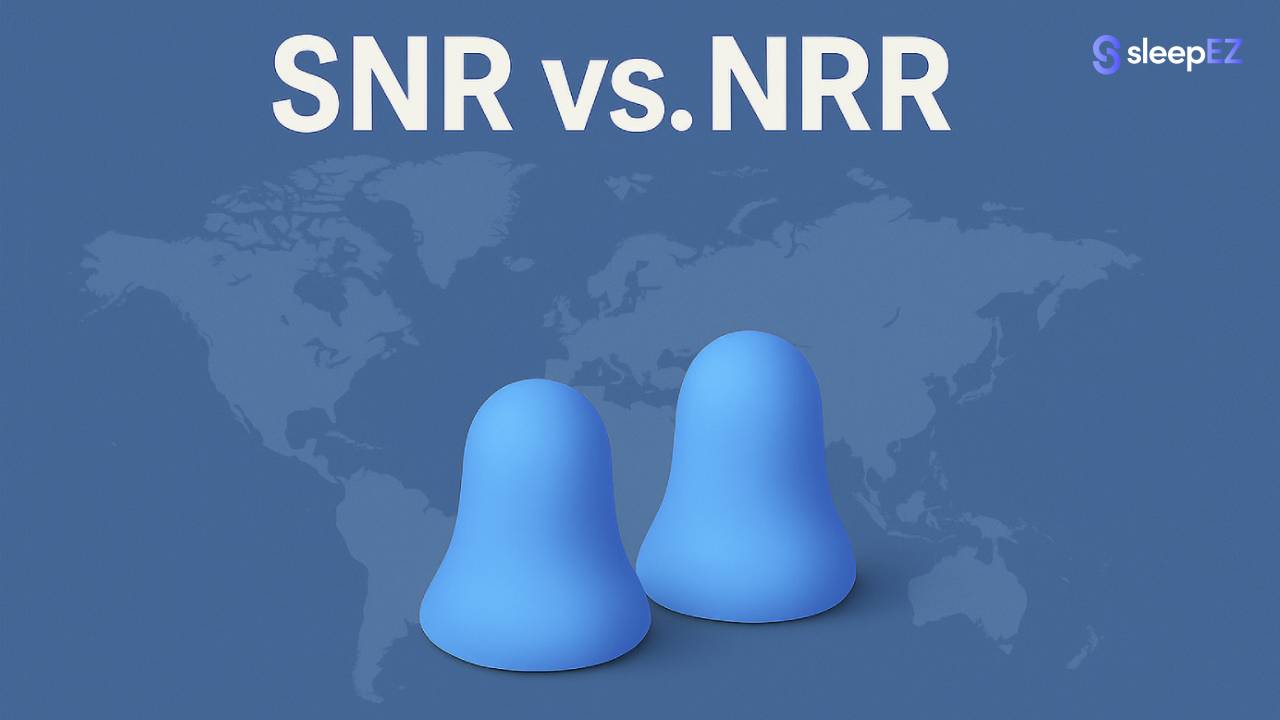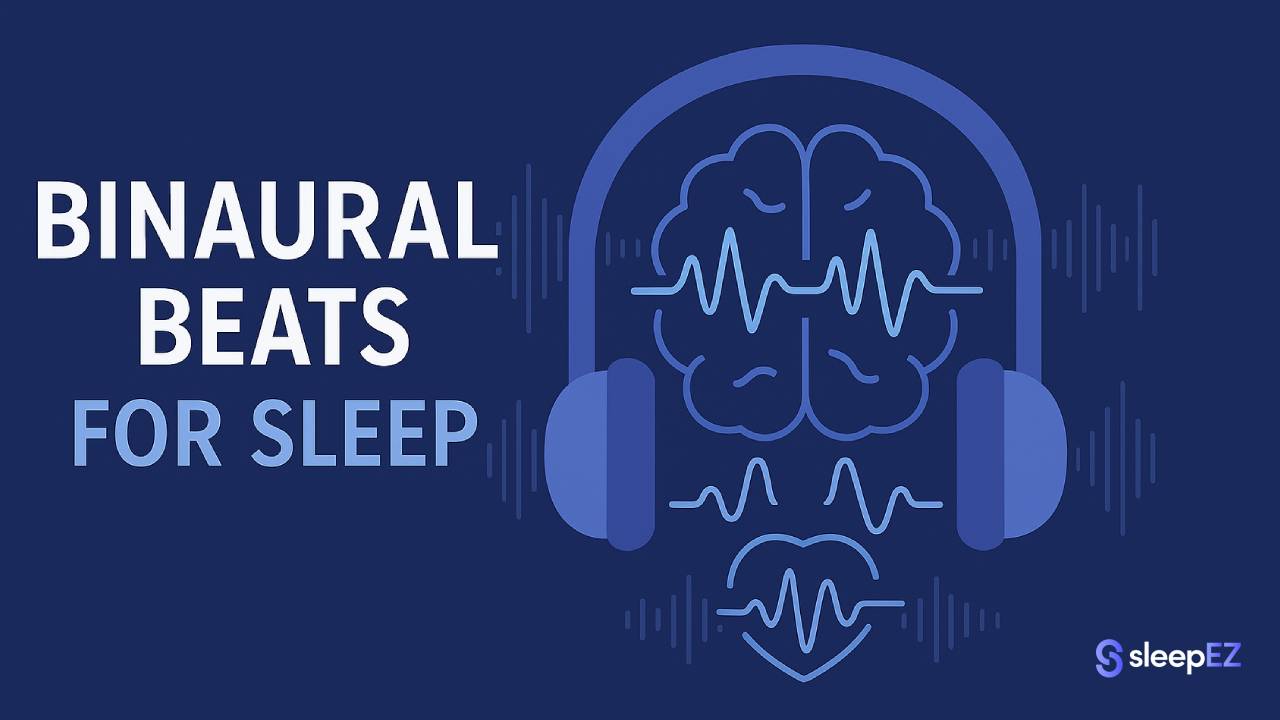Poor sleep because of noise can wreck your entire day. Your partner snores. Traffic rumbles outside. Neighbors slam doors at midnight. The right earplugs can solve all of this.
But which type works best for sleeping? Foam earplugs block more sound, but silicone earplugs offer better comfort and hygiene. For most people who want better sleep, silicone wins.
How Foam and Silicone Earplugs Work
Foam earplugs are made from soft foam that you squeeze, insert, and let expand inside your ear canal. They create a tight seal by filling the entire canal space.
Silicone earplugs work differently. They're made from soft, moldable silicone that you press against the outer part of your ear canal. They seal the entrance without going deep inside.
The main difference is where they sit. Foam goes in. Silicone stays out.
Read: 5 Best Ear Plugs for Sleeping
Noise Blocking: How Much Do You Really Need for Sleeping?
Foam earplugs have higher noise reduction ratings. In Australia, we use SNR (Single Number Rating), which shows the average noise reduction across different frequencies. Quality foam earplugs reach 32-33 decibels of noise reduction. That's enough to block the sound of heavy machinery.
But do you need that much blocking for sleep? Probably not.
Most bedroom noise sits around 40-60 decibels. A snoring partner hits about 50 decibels. Street traffic ranges from 40-55 decibels. According to Safe Work Australia, prolonged exposure to sounds over 85 decibels can cause hearing damage. Silicone earplugs reduce noise by 24-27 decibels. That's plenty to bring these sounds down to a comfortable level.
Too much noise blocking can actually hurt your sleep. You might not hear your alarm. You could miss important sounds like smoke detectors or a crying child. Foam earplugs can create an uncomfortably silent environment.
Comfort and Fit for Side Sleepers
Here's where foam earplugs really struggle. When foam expands inside your ear canal, it creates pressure. That pressure builds up over several hours of sleep.
Side sleepers have it worse. Your pillow pushes the earplug deeper into your ear. This creates painful pressure points. Many people wake up with sore ears after using foam earplugs all night.
Silicone earplugs sit at the entrance of your ear canal. They don't create internal pressure. When you lie on your side, they compress slightly but don't dig in. Most people find them comfortable for 8+ hours of sleep.
Hygiene and Reusability
Foam earplugs are basically disposable. The foam material absorbs sweat, dead skin, and earwax. You can't really clean them properly. Most manufacturers recommend throwing them away after a few uses.
This gets expensive fast. A pair of foam earplugs costs about $0.50. If you use them every night and replace them weekly, that's $26 per year.
Silicone earplugs are reusable. You can wash them with soap and water. Good silicone earplugs last 3-6 months with regular cleaning. While individual pairs might cost $10-20, some brands offer better value - for example, you can get multiple pairs for around $15, bringing the cost per pair down significantly. Either way, they save money over time and are better for the environment.
The hygiene difference matters. Dirty earplugs can cause ear infections. Clean, reusable silicone is the safer choice.
When Foam Earplugs Make More Sense
Foam earplugs aren't useless. They excel in very loud environments. Construction workers need maximum noise protection. People attending concerts want the highest possible noise reduction.
Foam also works for short-term situations. Flying on a plane. Studying in a noisy library. One-time events where you need serious sound blocking.
But for sleeping every night? Foam creates more problems than it solves.
Silicone Earplugs Work for Every Ear Size
One major advantage of silicone earplugs for sleeping is their ability to fit virtually any ear size or shape. Unlike foam earplugs that come in standard sizes, moldable silicone earplugs conform to your unique ear anatomy.
Everyone's ears are different. Some people have narrow ear canals that make standard foam earplugs uncomfortable or ineffective. Others have wider canals where foam doesn't expand enough to create a proper seal. Children and adults with smaller ears often struggle to find foam earplugs that fit properly.
Silicone solves this universal fit problem. You simply mold the silicone putty to cover your ear opening, regardless of size. The material adapts to your ear's exact contours, creating a custom seal every time. This means couples can share the same pack of silicone earplugs, even if they have dramatically different ear sizes.
The moldable nature also means silicone earplugs maintain their effectiveness over time. As the material wears slightly, you can simply reshape it for a fresh, comfortable fit.
Why Silicone Is the Better Choice for Sleeping
Silicone earplugs hit the sweet spot for sleep. They block enough noise to help you sleep without creating a sensory deprivation chamber.
The comfort factor is huge. You can sleep on your side without pain. You can wear them all night without pressure headaches.
Better hygiene means healthier ears. Reusability saves money and reduces waste.
Silicone earplugs also don't fall out as easily. Foam can work loose during sleep, especially if you move around. Silicone stays put better.
Choosing the Right Silicone Earplugs for You
Not all silicone earplugs are the same. Look for these features:
- Softness: The silicone should feel pliable, not stiff or sticky.
- Shape: Some are pre-molded. Others are moldable putty. Moldable versions fit more ear shapes.
- SNR Rating: Look for 24-27 decibels of noise reduction. Higher isn't always better for sleep.
- Hypoallergenic Materials: If you have sensitive skin, check that the silicone won't cause reactions.
When shopping for silicone earplugs, you'll find various options in the market. Brands like Quietbuds have gained popularity among sleep-conscious Australians for their comfortable silicone design that stays put throughout the night. Most quality silicone earplugs range from $5-15 per pair, making them an affordable investment in better sleep quality.
The Bottom Line
Foam earplugs block more sound but create comfort and hygiene problems for regular sleep use. Silicone earplugs offer the right balance of noise reduction, comfort, and cleanliness for nightly wear.
|
Feature |
Foam |
Silicone |
|
Noise Reduction (SNR) |
32-33 dB |
24-27 dB |
|
Sleep Comfort |
Poor |
Excellent |
|
Side Sleeping |
Uncomfortable |
Comfortable |
|
Hygiene |
Poor |
Excellent |
|
Reusability |
Single Use |
3-6 Months |
|
Cost per Year |
$26+ |
$10-20 |
|
Best For |
Industrial Noise |
Sleep |
If you're tired of being tired because of noise, try silicone earplugs for a week. Your ears and your sleep quality will thank you.



Leave a comment
This site is protected by hCaptcha and the hCaptcha Privacy Policy and Terms of Service apply.